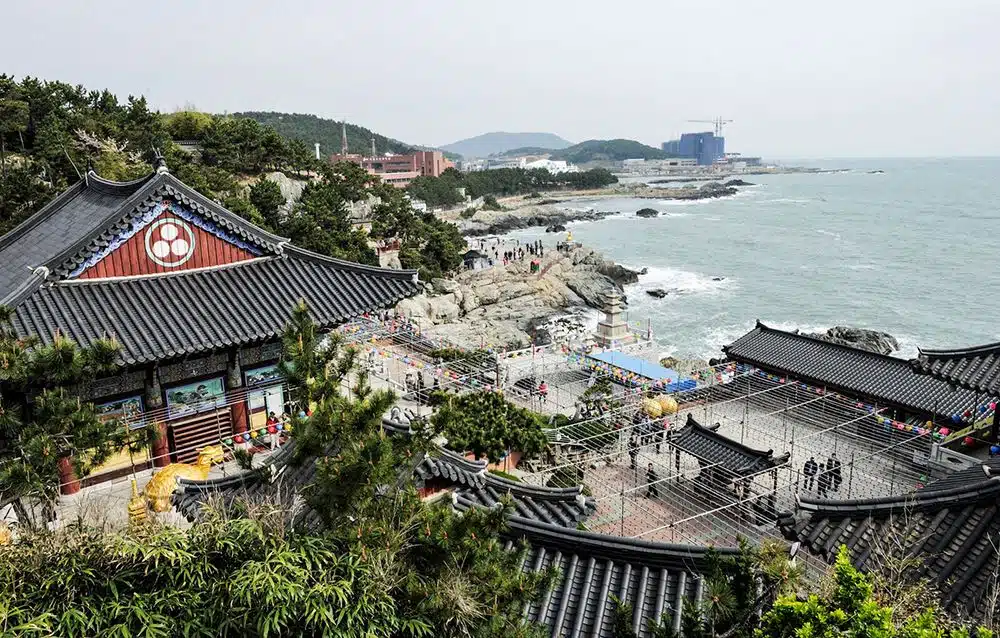Explore Japan like never before aboard a PONANT EXPLORATIONS luxury small ship. Designed for elegance and intimacy, our vessels grant exclusive access to smaller, less-traveled ports – places where ancient traditions and modern brilliance quietly coexist. We invite you to step into Japan’s inspiring story, from sacred Shinto shrines hidden in misty forests to gleaming glass towers that touch the sky.
Explore Japan’s Sacred Shinto Shores
Along Japan’s intricate coastline lie some of the country’s most revered spiritual sites – testaments to centuries-old Shinto beliefs. Shintoists, as they are sometimes called, believe in many gods, and that those gods inhabit all things. The religion has long shaped Japan’s deep reverence for nature, harmony, and tradition.
Here’s a sampling of the shrines you’ll visit during our Japan journeys.
Iki Island’s Shinto Shrines
Tucked away in the Genkai Sea, Iki Island is one of the cradles of Shintoism. Over 150 Shinto shrines dot the island’s lush hills and coastal cliffs. The most celebrated, Amanotanagao Shrine, stands at the top of 137 moss-covered steps. This ichi-no-miya – meaning “first shrine” to denote its importance – dates back some 1,200 years and is believed to be a gateway between the human and divine. The serene atmosphere, accompanied by whispering pines and distant waves, creates a sacred silence that invites quiet reflection.
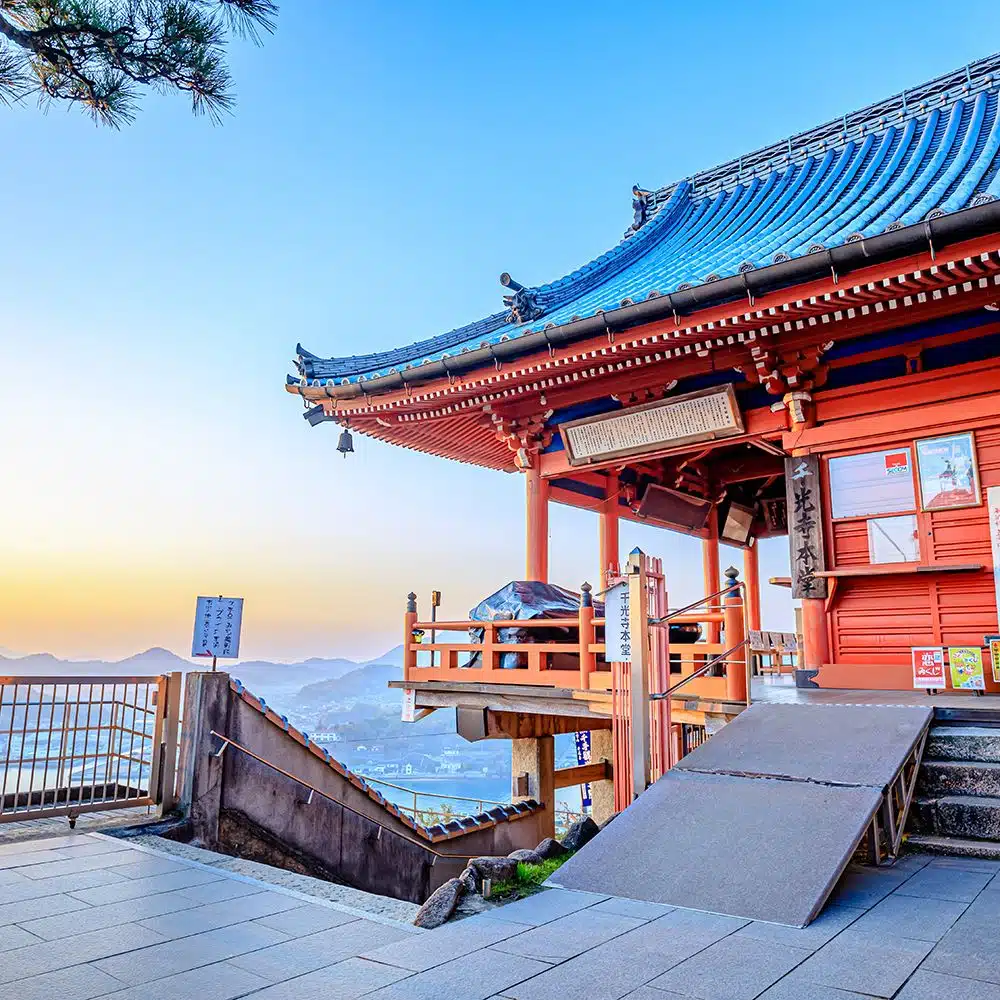
Onomichi: Temples, Hills, and Harmony
Known for its poetic landscapes and meditative temple walks, Onomichi hosts several Shinto shrines that are beautifully integrated into the town’s steep hillsides. Several were spared from destruction during World War II bombing, so you’ll see them in their original state. Three of them stand out: Senkō-ji, with its sweeping view over the town; Saikoku-ji with its three-storied pagoda; and Jodō-ji with its eleven-faced statue of the goddess Guanyin. The views across the Seto Inland Sea are reminders of the deep harmony between land, sea, and spirit.
.
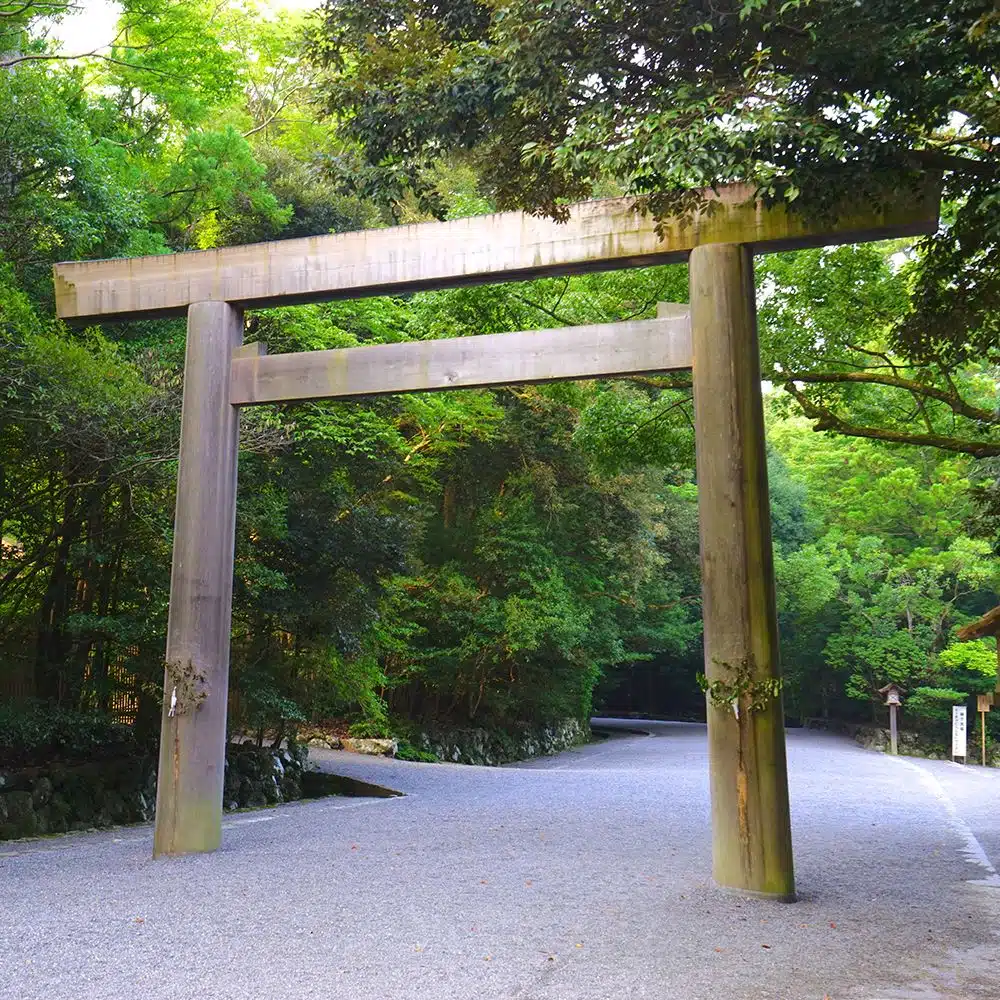
Toba’s Ise Grand Shrine
Considered one of Japan’s most sacred Shinto sites, Ise Jingū in Toba is an awe-inspiring complex dedicated to the sun goddess Amaterasu and the grain goddess Toyouke-hime. The shrine is rebuilt every 20 years in accordance with the Shinto principles of renewal known as tokowaka – an architectural ritual dating back over 1,300 years. Walking through its towering cypress gates, past gravel paths, and wooden torii, is a humbling experience that connects you to Japan’s spiritual heart.
Shingu’s Kumano Hongū Taisha & Kumano Hayatama Taisha
In the verdant mountains of Shingu, these two grand shrines are part of the UNESCO-listed Kumano Kodo pilgrimage route. Surrounded by ancient cedar forests and rushing rivers, Kumano Hongū Taisha sits on a forested plateau, while Kumano Hayatama Taisha rests near the mouth of the Kumano River. Pilgrims and visitors alike are drawn to the mystical energy of these sacred spaces, where every moss-covered stone seems to hold an ancient imperial secret.
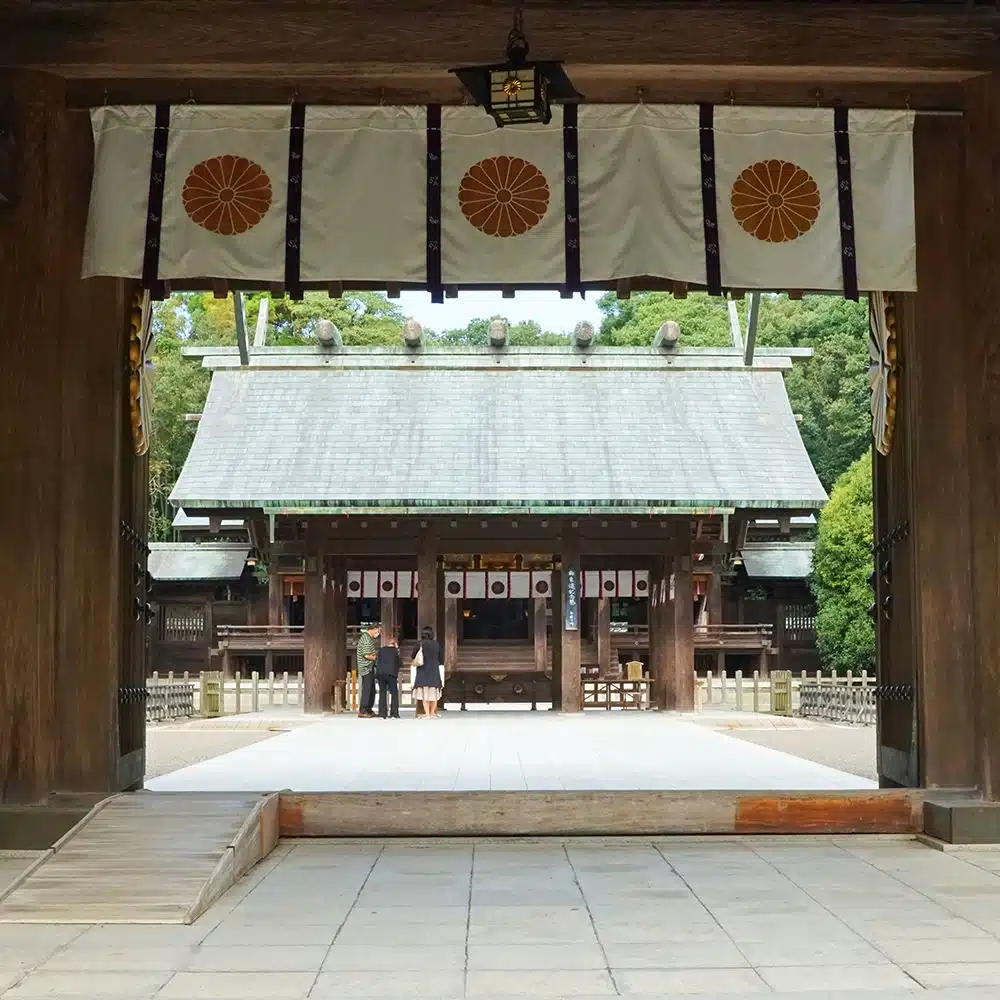
Miyazaki-jingū: Echoes of Japan’s Mythological Past
Dedicated to Emperor Jimmu, the legendary first emperor of Japan, Miyazaki-jingū is enveloped in ancient forest despite that it sits in the heart of the city. The shrine’s unpainted cedar buildings blend seamlessly into their surroundings, giving a sense that it is in harmony with the woodlands. The sense of peace here can be profound – there’s little sound beyond the rustling of trees and the soft tapping of footsteps on the stone path.
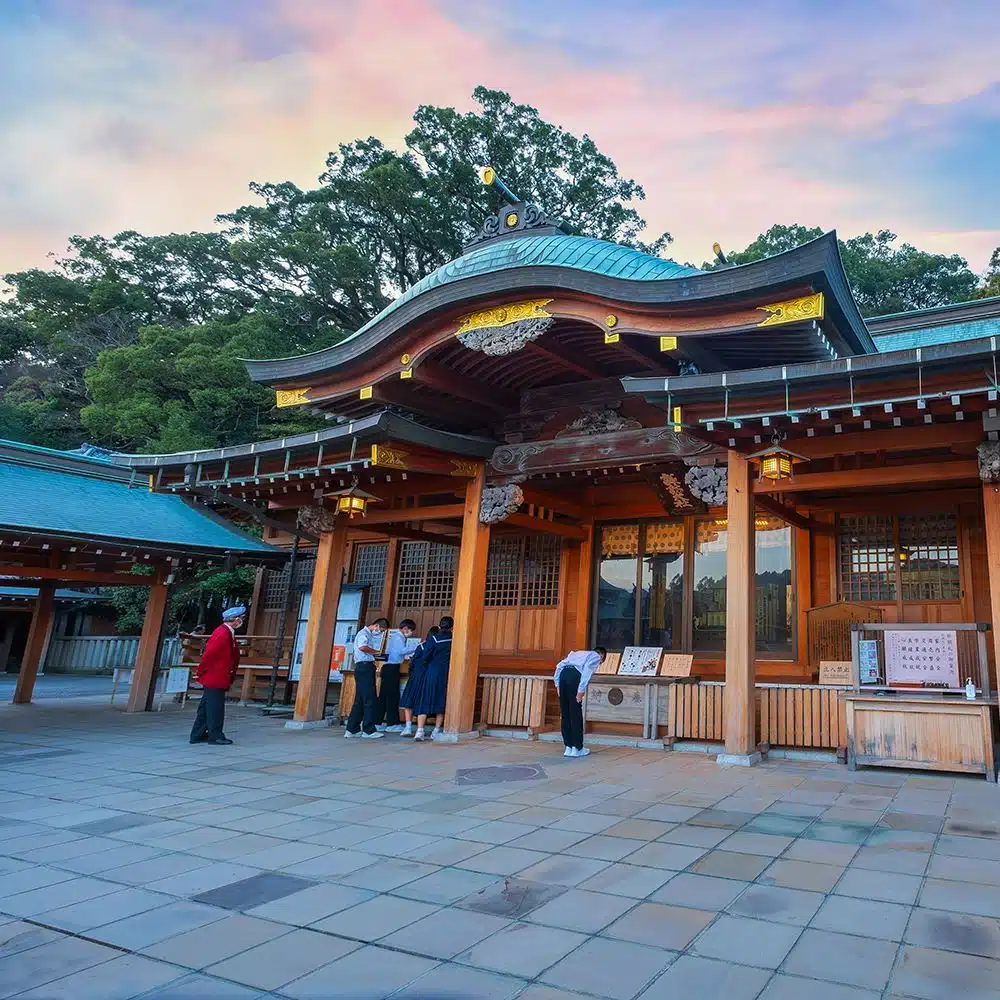
Nagasaki’s Suwa Shrine
Perched above the city on the slopes of Mt. Tamazono, Suwa Shrine in Nagasaki is not only a religious center but also a symbol of resilience. Built in the early 17th century, it played a vital role in preserving Shinto traditions during times of religious suppression. It also survived the bombing of Nagasaki at the end of World War II. Many point out that its location on the mountain’s southern slope saved it. Others believe a more divine intervention was at work. Avid walkers can climb the 277 stairs that lead to the shrine complex.
Discover Japan’s Modern Marvels
Japan’s coastline doesn’t just whisper echoes from the past – it hums with innovation, style, and architectural daring. Whether you’re gazing at skyline reflections or sampling sushi at sunset, Japan is brimming with modern wonders, too.
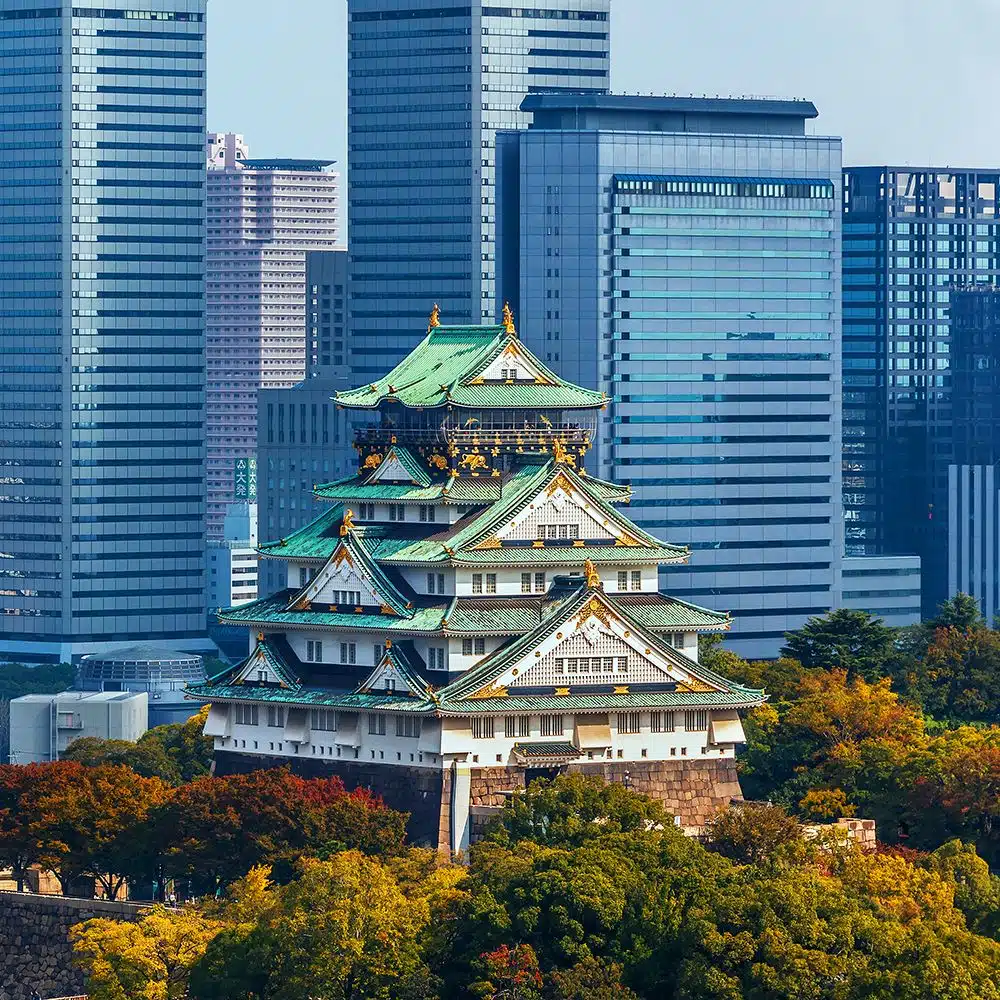
Skyscrapers & Fish Markets
In cities like Osaka and Kobe, skyscrapers dwarf bustling neighborhoods like soaring sentinels from Japan’s rapid 20th-century progress. In downtowns across the archipelago, towering neon signs turn nights into multi-colored days, and high-speed shinkansen trains whisk business and leisure travelers from hub to hub. Many city shrines seem out of place amid the cities and hi-tech bustle that have grown up around them. But make no mistake: They play as important a role in any metropolis as karaoke bars and shopping malls.
For all the sights and scents that transport you back to Japan’s traditional fishing culture, the local fish markets are a modern wonder, too. In cities throughout the nation, chefs and fishmongers trade in the freshest catch – many accepting payment by phone apps in place of crinkled paper yen. It’s a feast for all the senses, from colorful slippery seafood to sizzling food counters serving up sea urchin, grilled squid, and just-made sushi.
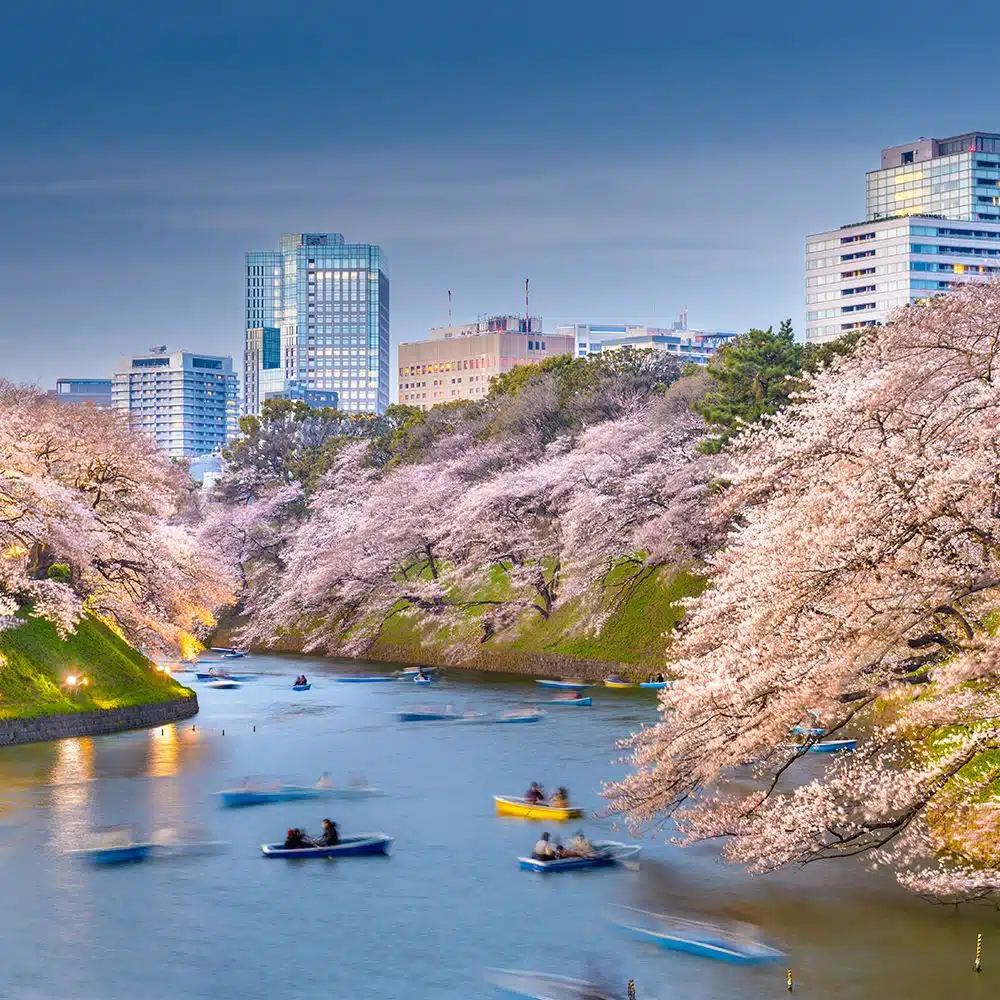
The Art of the Garden: Korakuen & Yushien
Japan’s gardens are masterpieces of design, blending water, stone, and seasonal flora to create living paintings. At Korakuen Garden in Okayama, one of the Three Great Gardens of Japan, stroll among wide lawns, tranquil ponds, and winding paths whose blooms change with the seasons. You can also explore Yushien Garden in Matsue, a dazzle of peonies in spring and irises in summer, all in a stunning water garden.
The Seto Ohashi Bridge
Spanning more than eight miles across the Seto Inland Sea, the Seto Ohashi Bridge is a breathtaking feat of engineering. Comprising six individual bridges, it connects Okayama to Kagawa and serves both trains and cars. This giant structure – especially at sunset – offers panoramic views that are at once industrial and ethereal.
Moji’s Architectural Legacy
The coastal town of Moji stands as a living museum of Meiji-era modernization. Walking through its streets reveals perfectly preserved Western-style buildings from the early 20th century – banks, customs houses, and train stations that speak to Japan’s international emergence. In fact, the train station in town was modelled after Rome’s Termini Station. Cafés and galleries now occupy these charming buildings, bridging history and modernity with grace and sophistication.
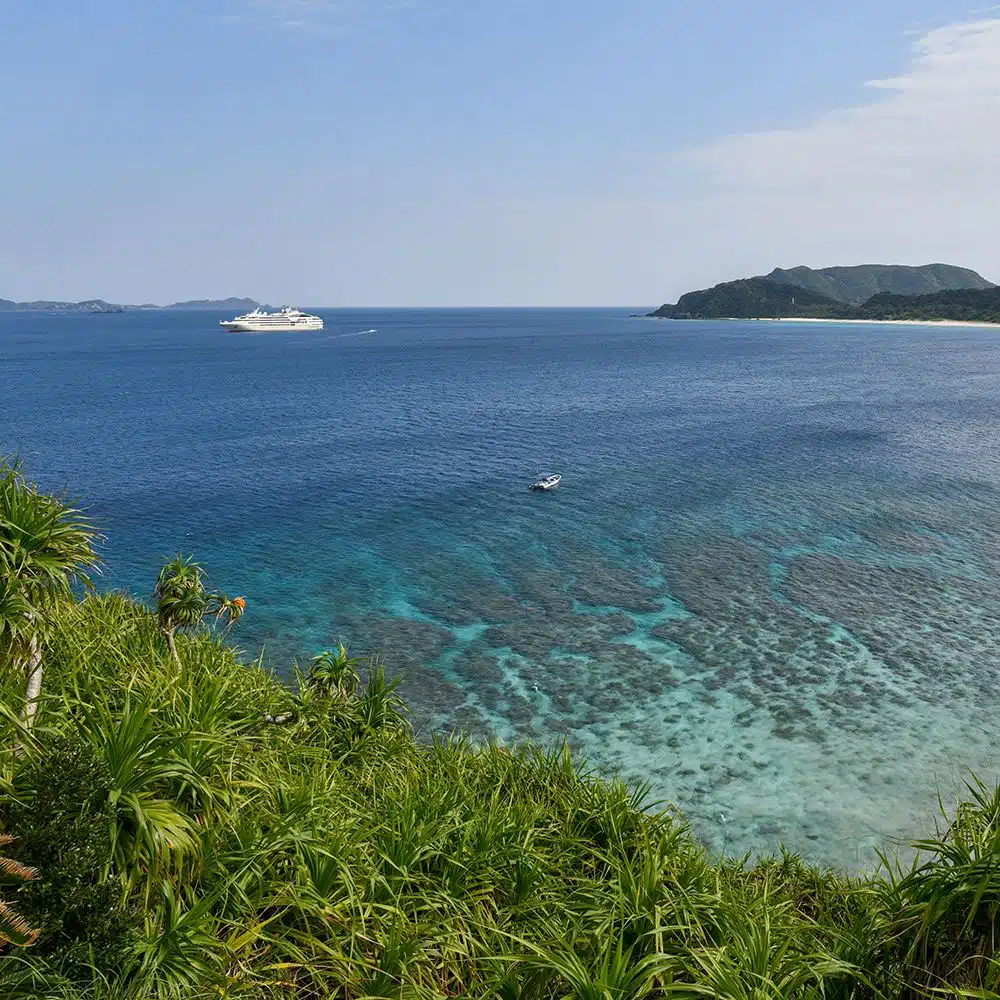
Set sail into a land of Contrast and Harmony
With PONANT, every journey into the Japanese archipelago is a study in contrasts – between the sacred and the secular, the serene and the spectacular. Let our expertly curated Japan itineraries transport you to breathtaking coastal treasures, where ancient shrines whisper centuries-old prayers and modern marvels celebrate human ingenuity.
Reserve Your Place on This Unforgettable Voyage
Our Voyage Along the Great Lakes is an unparalleled opportunity to explore the grandeur of the world’s largest freshwater lake system. Secure your preferred date now and be among the privileged few to witness it all in the comfort and elegance of a PONANT luxury small ship, with the immeasurable insights of accompanying Smithsonian Journeys Experts.
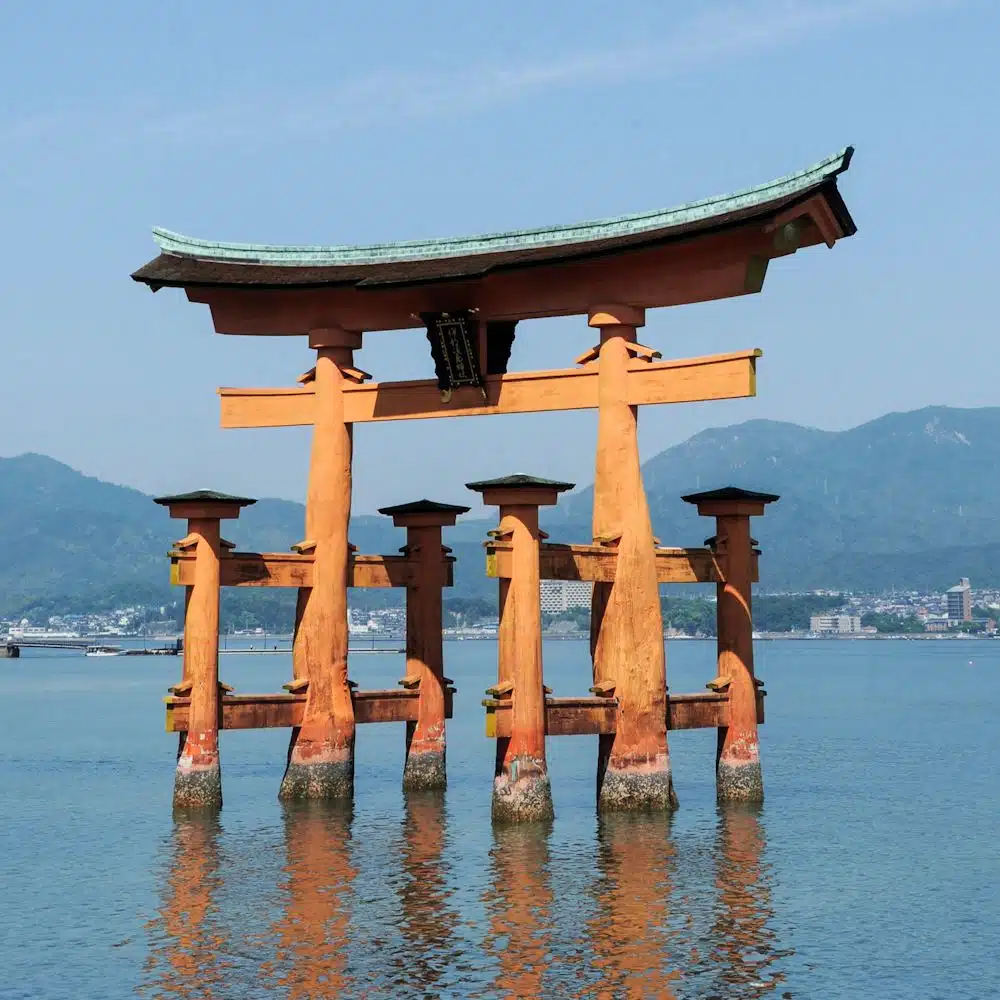
Reserve your stateroom and set sail for Japan
A cruise through Japan will take you to the heart of this cultural crossroads, where ancient traditions meet modern innovations. Mediaeval relics, historic temples, and ancestral rites are scattered throughout the futuristic cities and global urban centers of Japan.

